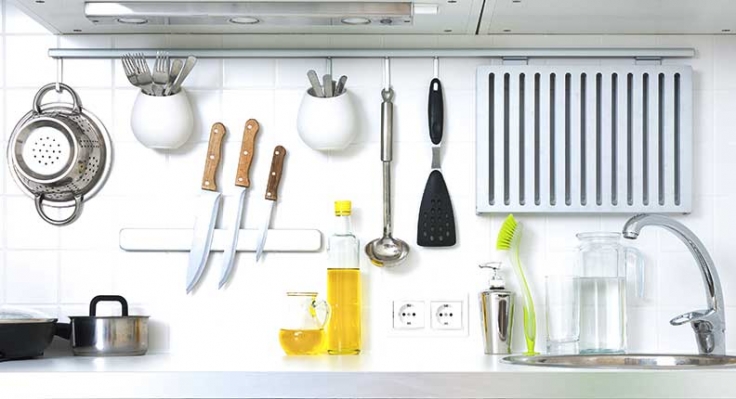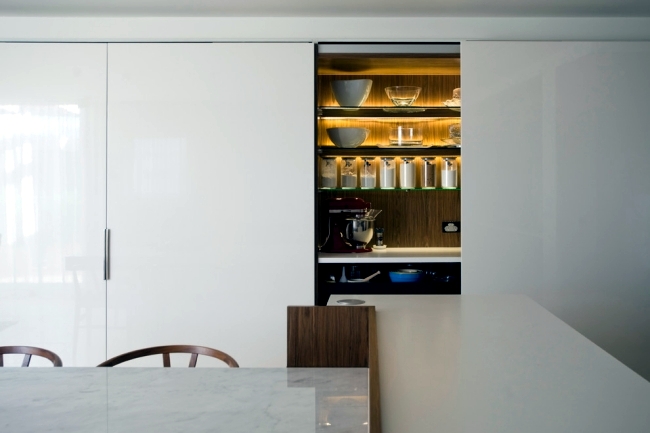
Where Germs Are Hiding in Your Kitchen
Are you aware of all the germs that could be hiding in your kitchen? Our interactive photo highlights the most common bacteria, where they’re hiding and how to kill them.
Your kitchen might look clean…but is it really? Beneath the veneer of sparkling countertops and sinks, germs may be hiding. The first step to eradicating bacteria-ridden problem areas is to know where germs breed. This can help reduce the number of cold and flu viruses your family is exposed to.
Sponges
Germs love sponges — they provide the ideal environment for bacteria like salmonella and E. coli to spread and multiply. First line of defense: Keep your sponge clean by washing it once a week in hot water. The Centers for Disease Control and Prevention also recommends microwaving your sponge once a day for about 30 seconds. That’ll kill 99% of the bacteria on it. Swap out sponges for a new one once a month, or every two weeks if used frequently. You can also skip the sponge altogether and try a plastic scrub brush that you can disinfect in the dishwasher instead.
Faucet handles
If you’ve ever picked up raw meat, only to turn on the faucet to wash your hands, you can easily see how sneaky germs can accumulate on the handles. To avoid contamination, use disinfectant wipes on the handles before proceeding with your next task.
Appliance handles
Every time you grab raw meat out of your fridge or touch the handle of an appliance, you could be spreading bacteria. When you’re cleaning your appliances, don’t forget to use disinfectant on the underside of the handles.

Refrigerator bottom shelf
Moisture, condensation and juices travel south from the upper shelves, making the bottom shelf of your fridge a hot spot for bacteria. Wipe it down with disinfectant every couple of weeks.
Stovetop knobs
Mold, yeast and bacteria may all be residing on your stove knobs. Remove the knobs once a week and wash them in hot, soapy water. Make sure they’re completely dry before you replace them.
Coffee makers
That morning cup of joe could be making you sick if you’re not careful. Keep your machine’s reservoir germ free by cleaning it with vinegar. Pour 4 cups into the reservoir, let the vinegar sit for 30 minutes, then run the brew cycle. Finish by running two or three cycles of clean water to clear out any residual vinegar, and you’re good to go.
Cutting boards
Do you clean your cutting board or just rinse it off? Disinfect your board after each use, especially when cutting raw meat. Avoid cross-contamination by purchasing three plastic cutting boards in different colors. Use one for veggies and fruit, one for meat and one for fish.
Countertops
Sure, you clean them after you prep food, but how about before? Sanitize your countertops with hot, soapy water, a bleach solution or antibacterial wipes before and after food prep. A key tip: After washing, dry your countertops with a clean paper towel or cloth so there’s no moisture for bacteria to thrive in.
Sinks and drains
Did you know that more E. coli lives in your sink than in your toilet? Bacteria feed on the food and juices you pour down the drain and scrape off dishes. Clean your sink basin with a disinfectant — vinegar or lemon juice won’t do the job.
Kitchen tools
How clean is that spatula? Did you remember to wash your knife in hot water after cutting that chicken breast? Scrub your kitchen utensils in hot, soapy water before and after each use.
Source: https://www.searshomeservices.com/